Home Improvement
The Ultimate Guide to Furnace Maintenance

A well-maintained furnace is essential for ensuring your home stays warm and comfortable throughout the colder months. Regular furnace maintenance not only extends the life of your heating system but also ensures it operates efficiently, saving you money on energy bills and reducing the risk of breakdowns.
In this guide, we’ll cover everything you need to know about furnace maintenance, from routine tasks you can do yourself to the importance of professional inspections.
Why Furnace Maintenance Matters
Furnace maintenance is critical for several reasons:
Improved Efficiency
A clean and well-tuned furnace operates more efficiently, using less energy to heat your home. This not only lowers your utility bills but also reduces your carbon footprint.
Enhanced Safety
Furnaces that are not properly maintained can pose safety risks, such as carbon monoxide leaks or even fires. Regular inspections can identify and address potential hazards before they become serious problems.
Extended Lifespan
Like any mechanical system, a furnace that receives regular care will last longer. Routine maintenance helps prevent excessive wear and tear, reducing the likelihood of premature breakdowns and the need for costly replacements.
Reliable Performance
Regular maintenance ensures your furnace is ready to perform when you need it most, minimizing the risk of unexpected failures during the coldest months of the year.
DIY Furnace Maintenance Tasks
While some furnace maintenance tasks should be left to professionals, there are several routine tasks that homeowners can do to keep their systems in good shape:
Replace the Air Filter
One of the most important maintenance tasks is regularly replacing the air filter. A dirty filter restricts airflow, forcing your furnace to work harder and reducing efficiency. Aim to replace the filter every 1-3 months, depending on usage and the type of filter.
Check the Thermostat
Ensure your thermostat is functioning correctly by testing it before the heating season begins. If you have an older thermostat, consider upgrading to a programmable or smart thermostat to improve energy efficiency.
Inspect the Vents
Walk through your home and check that all vents and registers are open and unobstructed. Blocked vents can cause uneven heating and put extra strain on your furnace.
Clean Around the Furnace
Keep the area around your furnace clear of dust, debris, and flammable materials. A clean environment reduces the risk of fire and ensures proper airflow to the system.
Check the Flame
If you have a gas furnace, check the pilot light or burner flame. The flame should be a steady blue color. A yellow or flickering flame could indicate a problem with the burner or a carbon monoxide issue, which requires immediate professional attention.
The Importance of Professional Furnace Maintenance
While DIY tasks are important, scheduling professional furnace maintenance at least once a year is crucial for keeping your system in top condition. Here’s what to expect during a professional furnace tune-up:
Comprehensive Inspection
A professional technician will perform a thorough inspection of your furnace, checking for signs of wear, corrosion, and potential issues with components such as the heat exchanger, blower motor, and electrical connections.
System Cleaning
The technician will clean various parts of the furnace, including the burners, blower, and heat exchanger, to ensure optimal performance and efficiency.
Lubrication
Moving parts, such as the blower motor, may require lubrication to reduce friction and prevent wear. This helps your furnace run smoothly and quietly.
Safety Checks
Safety is a top priority during a professional tune-up. The technician will check for gas leaks, carbon monoxide emissions, and ensure the proper operation of safety controls.
Performance Testing
After completing the inspection and cleaning, the technician will test the furnace’s performance to ensure it is heating your home effectively and efficiently. This includes checking the system’s airflow, thermostat calibration, and overall operation.
When to Schedule Furnace Maintenance
The best time to schedule furnace maintenance is in the fall, before the heating season begins. This ensures your furnace is in peak condition when you need it most. However, if you haven’t had your furnace serviced in over a year, it’s never too late to schedule a tune-up.
Additionally, if you notice any of the following signs, you should contact a professional for maintenance or repairs immediately:
- Unusual noises such as banging, rattling, or squealing.
- Inconsistent heating or cold spots in your home.
- An unexplained increase in your energy bills.
- A yellow or flickering pilot light or burner flame.
- Frequent cycling on and off of the furnace.
The Cost-Benefit of Regular Furnace Maintenance
Some homeowners may be tempted to skip annual maintenance to save money, but this can be a costly mistake in the long run. Here’s why regular furnace maintenance is a smart financial investment:
Lower Energy Bills
As mentioned earlier, a well-maintained furnace operates more efficiently, which translates to lower energy consumption and reduced utility bills.
Avoid Costly Repairs
Routine maintenance helps catch small issues before they become major problems, reducing the likelihood of expensive emergency repairs.
Extend Furnace Lifespan
By preventing excessive wear and tear, regular maintenance can add years to the life of your furnace, delaying the need for a costly replacement.
Maintain Manufacturer’s Warranty
Many furnace manufacturers require proof of annual maintenance to keep the warranty valid. Skipping maintenance could void your warranty, leaving you responsible for the full cost of any repairs or replacements.
Conclusion
Furnace maintenance is an essential part of homeownership that can’t be overlooked. By performing regular DIY tasks and scheduling professional tune-ups, you can ensure your furnace runs efficiently, safely, and reliably for years to come.
Don’t wait until something goes wrong—schedule your furnace maintenance today and enjoy peace of mind all winter long.
Home Improvement
Transform Your Home with Contemporary Doors Interior: A Modern Aesthetic
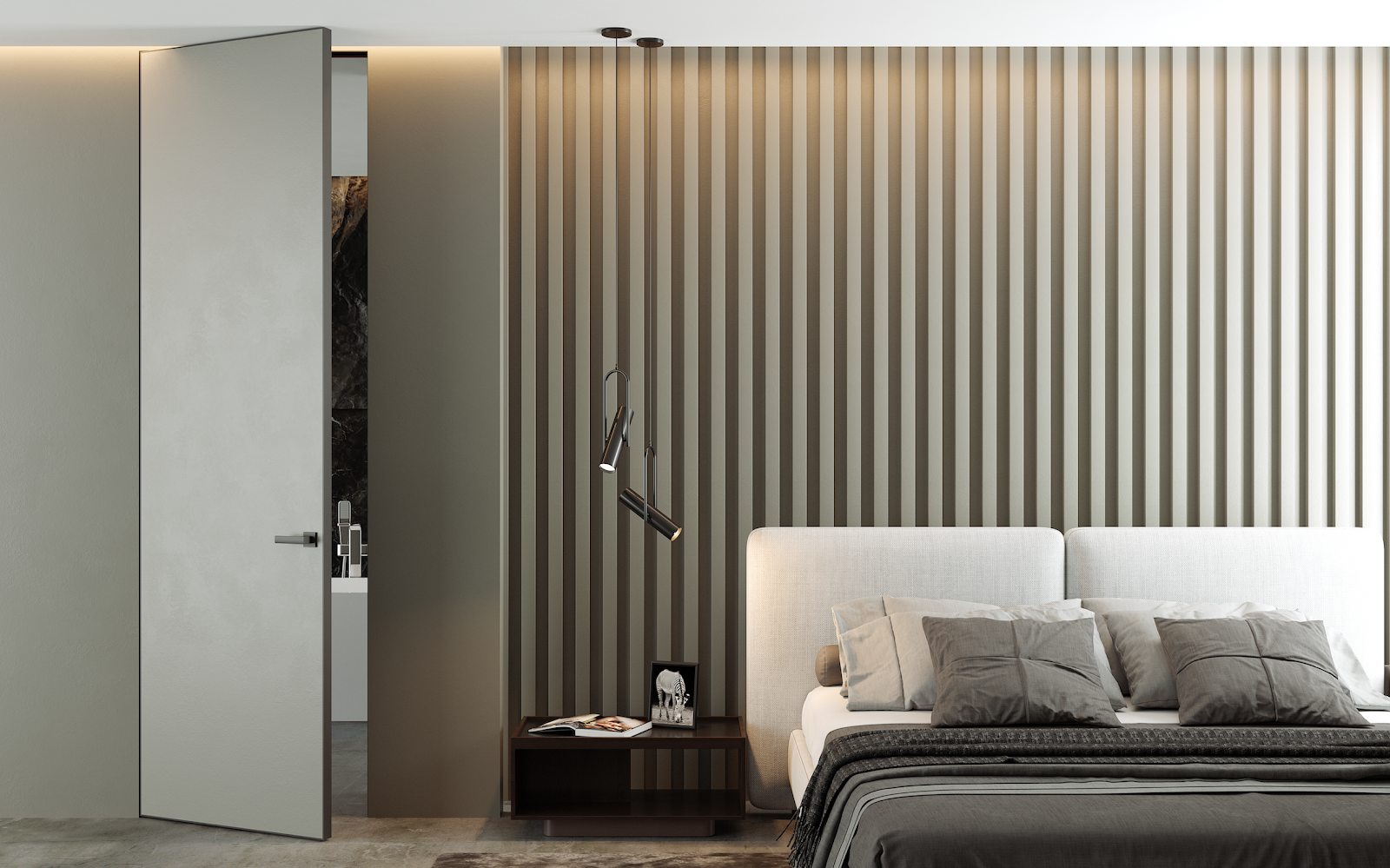

Choosing contemporary doors interior is a vital aspect of modern home design, offering both functionality and a stylish touch. These doors are more than just functional elements; they can significantly enhance the look and feel of your living spaces.
In this guide, we will explore different types of contemporary interior doors, their benefits, and what to consider when selecting the perfect doors for your home. We’ll also highlight TrioDoors door stores in Toronto, a leading provider of high-quality interior doors.
Exploring Types of Contemporary Interior Doors
Contemporary interior doors come in a wide range of styles and materials. Here’s a look at some of the most popular options:
- Panel Doors
- Modern Twist: Traditional panel doors updated with clean lines and modern materials.
- Variety of Configurations: Available in multiple panel configurations, such as two, four, or six panels.
- French Doors
- Elegance and Light: Glass panels allow for the flow of natural light, enhancing the sense of space.
- Contemporary Glass Options: Choose from frosted, tinted, or clear glass for a modern touch.
- Sliding Doors
- Space-Saving: Slide along a track, perfect for areas where space is limited.
- Modern Aesthetic: Commonly used in modern homes for closets, bathrooms, and as room dividers.
- Pocket Doors
- Hidden Design: Slide into the wall cavity, making them virtually invisible when open.
- Ideal for Small Spaces: Great for rooms where a swinging door would be impractical.
- Barn Doors
- Rustic Meets Modern: Mounted on a sliding track, combining rustic charm with contemporary design.
- Statement Piece: Acts as both a functional door and a focal point in any room.
Key considerations when choosing contemporary interior doors
- Material Selection
- Wood: Classic look, customizable with various finishes and stains.
- MDF (Medium-Density Fiberboard): Smooth, easy to paint, and more affordable than solid wood.
- Glass: Perfect for allowing light flow while maintaining a modern aesthetic.
- Metal: Durable, often used in industrial or modern designs.
- Style and Design
- Consistency: Ensure the door style matches your home’s overall design theme.
- Functional Needs: Consider the specific purpose and requirements for each door.
- Size and Measurements
- Standard vs. Custom Sizes: While most doors come in standard sizes, custom options are available for unique spaces.
- Accurate Measurements: Proper measurement of the door frame is crucial to avoid fitting issues.
- Hardware and Accessories
- Handles and Knobs: Choose hardware that complements the door style and home decor.
- Hinges and Tracks: Ensure hardware is durable and functional for the chosen door type.
- Installation
- Professional Installation: For best results, consider professional installation.
- DIY-Friendly Options: Some doors are designed for easy DIY installation.
Selecting the right contemporary doors interior is essential for achieving both functionality and a modern aesthetic in your home. From sleek flush doors to elegant French doors, the choices are vast and varied. When choosing interior doors, consider factors such as material, style, size, and installation requirements to ensure they meet your needs.
For quality and reliability, purchase your contemporary interior doors (https://triodoors.ca/interior-doors/) from reputable suppliers like TrioDoors door stores in Toronto. It offers a wide selection of high-quality doors that cater to various styles and budgets, ensuring you find the perfect doors for your home.
Enhance your living space today with the ideal contemporary doors interior!
Home Improvement
Best Place to Buy California Shutters in Toronto and Things to Know
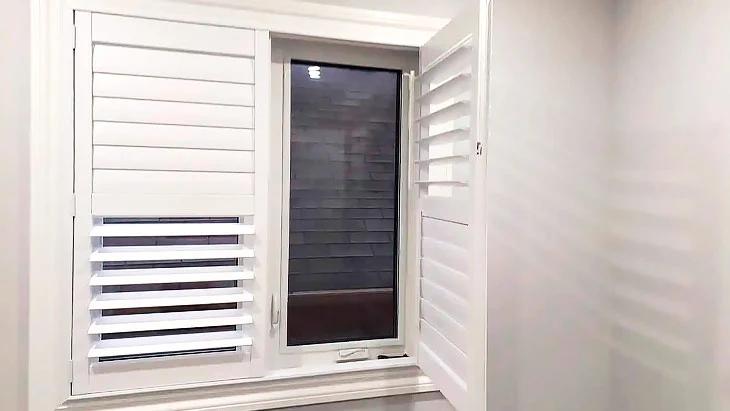

In Toronto with its population density, a large number of residents do care about privacy. This is why Vinyl Light gets lots of requests for California shutters Toronto area.
What Are California Shutters
California shutters are a form of interior window covering that is usually made of wood or composite materials. They are sometimes referred to as plantation shutters or just shutters. To adjust light and privacy, they have large slats that may be tilted open or closed.
These shutters, which are installed inside window frames, are renowned for their strength, beauty, and capacity to improve sound absorption and insulation in a space. They give windows in homes and businesses a traditional, refined appearance, and they are well-liked for their timeless design and usefulness.
Features of California Shutters
California shutters’ primary advantages are:
- Beauty. They provide any area with a classic, ageless look that enhances its overall charm.
- Light control. California shutters let you control the amount of natural light that enters your room, giving you freedom and ambiance.
- Privacy. Because they offer such remarkable solitude, they are ideal for baths and bedrooms.
- Energy efficient. By keeping your home warm in the winter and cool in the summer, the insulation they offer may help you save money on your energy bills.
- Resilience. California shutters are robust and durable.
- Easy maintenance. They are easy to maintain, requiring only the occasional wipe down with a damp cloth.
- Increase the value of your property. Installing California shutters could increase the value of your home because many purchasers believe them to be a desired feature.
California vs. Plantation Shutters
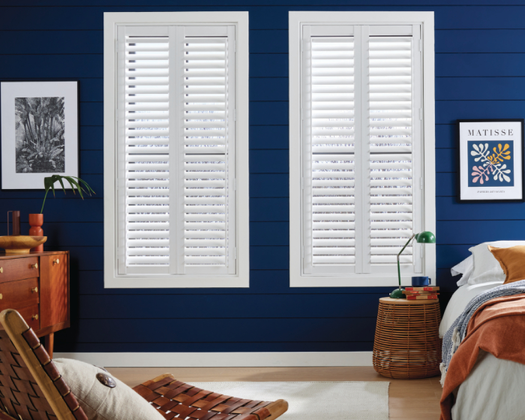

Depending on your unique requirements, tastes, and the design of your house, you can choose between plantation and California shutters.
- Window size. California shutters may look more proportionate on smaller windows and larger windows. Plantation shutters can improve the appearance of larger windows.
- Room style. Take into account the room’s general design and aesthetic. Plantation shutters complement modern or contemporary decor, while California shutters work well with traditional décor.
- Budget. Since plantation shutters may cost more, it may be a determining factor.
- Needs for light and privacy. Consider the degree of light and privacy control that you require. Both types of shutters offer good privacy.
Home Improvement
10 Easy Air Conditioning Maintenance Tips for Every Homeowner
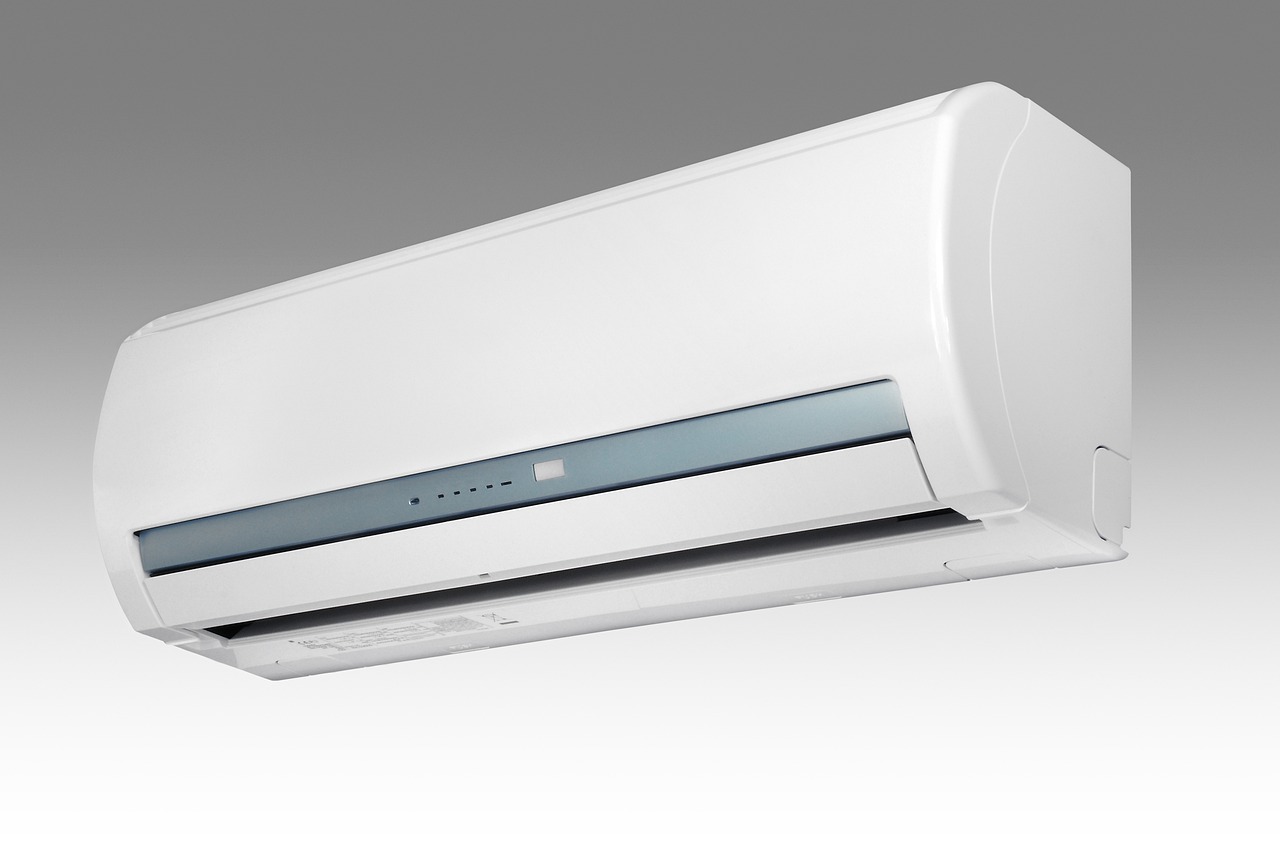

Air conditioners are quite necessary to keep our homes cool during the summer, but they need regular maintenance for them to continue functioning effectively.
Proper maintenance will help you not only to achieve a home comfort inside but also an extended lifespan for the unit and decrease in energy consumption.
If you’re facing frequent issues and think it might be time for a new unit, consider consulting an AC replacement company to explore your options.
Read our well-curated 10 pragmatic tips to guide you in effectively caring for your air conditioning system.
1. Routine Air Filter Changes for Optimal Performance
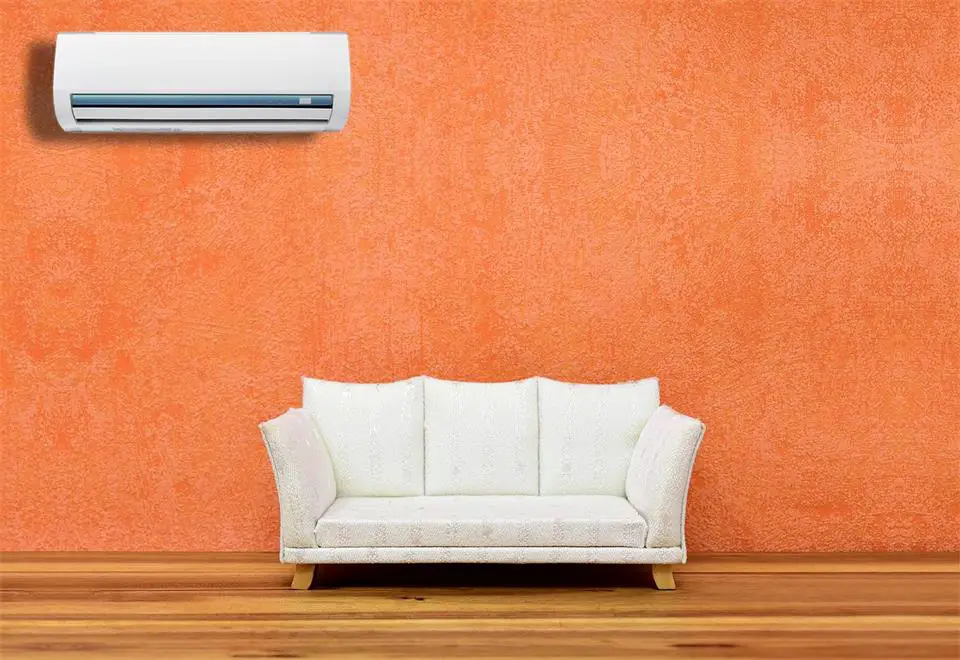

A very easy and important maintenance activity with your AC is replacing the air filter. When your filter becomes soiled and clogged, it’ll result in bad airflow and causes your system to work much harder and less efficiently than it needs to be. It also may affect the quality of air inside and causes allergies and respiratory problems.
Action Step: Check the air filter monthly, especially during high-season use periods. You should replace most air filters every 1-3 months. Replace it more often in these conditions of high usage if you have pets or a lot of dust floating around.
2. Inspect Your Thermostat for Proper Functioning
Your thermostat is part of the cooling appliance that has the significant responsibility to decide how you want your indoor temperature to be. If it cannot do so effectively, then your AC system will not work efficiently at all.
Action Step: Your thermostat should be set to the temperature and cooling mode correctly. For maximum energy saving, you might want to get a programmable thermostat: you can adjust the temperature to suit schedules to keep your home cool while saving on energy by not using as much when you are away.
3. Maintain Efficiency by Cleaning the Condenser Coils
Condenser coils are usually found in the outdoor unit. They cool the air in your home. They naturally collect dirt, dust, and debris over time that blocks the flow of cooling, causing your AC unit to work that much harder and ultimately overheat.
Action Step: Switch power off at the AC unit and spray coils gently with a garden hose. Avoid using a lot of pressure, since that will break the delicate fins, and for tough dirt stains, coil cleaner can be purchased usually at most hardware stores. Regular cleaning of the coils will make your unit work better.
4. Regularly Examine the Condensate Drain
The condensate drain also allows the moisture taken out of the air to drain outside your house. If it gets blocked, then it causes water damage; in addition, there would be high humidity levels inside your house.
Action Step: Check the condensate drain periodically for blockage or buildup inside it. If the drain is clogged, you can make it free using a wet/dry vacuum or pipe cleaner. Prevent the growth of algae and molds inside the drain line by just putting some drops of bleach there.
5. Maintain evaporator coils with routine cleaning
Inside this indoor unit is the evaporator coil, which takes heat from your home’s air. Dirty coils degrade performance and can even freeze the system up.
Action Step: Access the Evaporator Coils You may need to take up some of the indoor unit’s panels for access to the evaporator coils. Wipe off with a soft brush any dust or dirt that has gathered on them. Alternatively, use a no-rinse coil cleaner spray, if you want to clean it more thoroughly. Check and clean these coils at least once per year.
6. Ensure Ductwork is Leak-Free and Sealed
Leaky ducts significantly impact your AC system’s efficiency since the cool air escapes before it reaches its desired room. This wastes energy in addition to running the system harder to achieve and maintain the desired temperature.
Action Step: Check your ductwork for openings, seams, or partially or completely separated joints. Seal the openings, seams, and joints with mastic sealant. You can also use metal-backed tape, but avoid not duct tape. If you do not know the condition of your ductwork, have a professional assess it.
7. Keep Debris Away from the Outdoor Unit
An outdoor condenser unit will need adequate airflow for its successful operation. Sticking leaves, grass, or twigs can restrict airflow. They can adversely affect your system’s performance.
Action Step: Maintain at least 2-3 feet of clearance around the outdoor unit, free from debris. Some foliage or shrubs will need to be trimmed back, or if you experience leaves or other debris, clean these out on a regular basis. Also, ensure the unit is level on its base. If it is not level, it may cause problems with operations.
8. Check for Adequate Refrigerant Levels
The refrigerant inside your ac unit absorbs and releases heat. Therefore, it will play a big role in how effective it is in cooling your home. Thereby, the refrigerant levels inside your ac system may determine its efficiency or failure if low.
Action Step: If your AC system is not cooling right, that’s pretty much a good telltale sign that you have low refrigerant or a leak. Both of these are professional jobs that involve diagnosis and repair. Never mess around with refrigerants on your own-they’re hazardous to your health.
9. Plan Annual Maintenance with a Professional Expert
Most of the maintenance work may be done by an individual, but it’s quite recommended that you have your professional HVAC technician visit your system at least once every year to check several things that would not easily pop into the average homeowner’s mind.
Action Step: The pre-season inspection should be scheduled in spring before the cooling season starts. A technician will check and inspect your refrigerant levels, work on all electrical components, clean the coils, and check to ensure that your system is good and working well.
10. Stay Alert to Fluctuations in Energy Bills
An increase in your energy bill without any corresponding increase in your usage could very well be caused by an inefficient working of your AC system. This may result from a faulty component, dirty filter, or refrigerant leak, among others.
Action Step: Monitor your monthly energy bills. Whenever there is an unusual increase in your monthly energy bills, you should inspect your AC system yourself and check everything is fine or not. If you find nothing wrong, you should consider hiring a professional to inspect it properly.
Bonus Tip: Use Ceiling Fans Alongside Your AC for Efficiency
You could use ceiling fans with your AC system to circulate cool air in a more balanced fashion to every area in the house. That way, you might be able to raise the thermostat by another two or three degrees without seeming to lose much comfort, improve efficiency on the AC a little bit and save money on electricity.
Action Step: Flip on ceiling fans in rooms being occupied to help cool. Never forget to shut them off when leaving the room. It is these people, not the space which is being cooled.
Conclusion
Proper maintenance of your air conditioner can help ensure that you always have a cosy indoor climate and avoid expensive breakdowns or even having to replace the whole unit.
If you follow these 10 essential maintenance tips, your AC unit will perform with efficiency, save you energy dollars, and prolong its life.
The average person desires a sense of comfort, and one way to attain this comfort is by maintaining their AC unit.
Regular attention to your AC unit will improve its performance and give you peace of mind during sweltering months. Stay cool and comfortable by making AC maintenance a priority in your home!
-



 Captions3 years ago
Captions3 years ago341 Sexy Captions to Fire Up Your Instagram Pictures
-



 Captions3 years ago
Captions3 years ago311 Night Out Captions for Instagram and Your Crazy Night
-



 Captions3 years ago
Captions3 years ago245 Saree Captions for Instagram to Boost Your Selfies in Saree
-



 Captions3 years ago
Captions3 years ago256 Best Ethnic Wear Captions for Instagram on Traditional Dress
-



 Captions3 years ago
Captions3 years ago230 Blurred Picture Captions for Instagram
-



 Captions3 years ago
Captions3 years ago275 Deep Captions for Instagram to Express Your Thoughts
-



 Quotes3 years ago
Quotes3 years ago222 Nail Captions for Instagram to Showcase Your Fresh Manicure
-



 Captions3 years ago
Captions3 years ago211 Laughing Captions for Instagram | Laughter Is the Best Medicine






